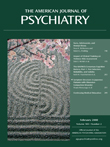Psychotic Depression
This book focuses on the more severe form of depression, “psychotic depression,” described as a subtype of “endogenous depression.” The topic of the book seems very timely given the dissatisfaction with the category of major depressive disorder in DSM-IV, the rather pessimistic results of large effectiveness studies such as STAR*D, and the flurry of activity regarding the revision of depression diagnoses.
The co-authors represent an interesting mix of talent. Dr. Conrad Swartz, a professor of psychiatry at Southern Illinois School of Medicine and a practicing clinician with particular expertise in ECT, is teamed with a distinguished historian of psychiatry, Professor Edward Shorter from the University of Toronto. Shorter has previously given us a number of excellent books, such as From Paralysis to Fatigue: A History of Psychosomatic Illness in the Modern Era and A History of Psychiatry: From the Era of the Asylum to the Age of Prozac , which provided unique insights on the vicissitudes and controversies surrounding the diagnosis and treatment of psychiatric and psychosomatic disorders. Shorter’s contribution gives the book a unique historical perspective that, in the opinion of this reviewer, becomes the key element of the book. The book includes eight chapters and two appendices. Chapters 1 through 3 focus on the history and diagnostic aspects of psychotic depression. Chapter 4 provides several illustrative vignettes, and Chapters 5 through 8 address therapeutic issues.
Chapter 2 includes an excellent history on the evolution of the concepts of melancholia and endogenous depression, starting in Europe and ending in North America. In this chapter, readers find interesting information on the origin and uses of the term “endogenous.” For example, we learn that Kurt Schneider borrowed the term from Emil Kraepelin, who apparently used “endogenous” to designate phenomena that were “entrenched in the very parenchyma of the brain itself.” From this, it has been deducted that “endogenous” refers to a biological condition. However, another meaning of “endogenous” in classical psychopathology is “unknown,” in so far as it remains unexplained by life events, medical disorders, or other “exogenous” factors. Indeed, Karl Jaspers used the term in this context when he stated, “we call ‘exogenous’ all physical illnesses, even the somatically endogenous cerebral disorders” (1) .
Chapter 2 also provides information on the question of whether there are two types of depression or one and the rise and fall of the dexamethasone suppression test. The inexplicable abandonment of this test as a useful diagnostic tool for psychotic (or endogenous or melancholic) depression is well covered in this chapter. However, this reviewer was disappointed to not find a clear proposal to bring this potentially useful test back into practice. Moreover, there was no mention of recent relevant publications on the subject.
In Chapter 3, the authors provide strong critiques of the current DSM-IV criteria for major depressive disorder, similar to those raised by several other experts in recent years. Thus, there seems to be a new surge in the field to bring the notions of “melancholia,” “endogenous,” and “psychotic depression” back into clinical parlance and, eventually, to incorporate them in the new nosology. Besides the critique of DSM-IV and ICD-10 criteria, the authors provide convincing arguments emphasizing that psychotic depression is an independent entity.
While the authors highlight key elements of the disorder, such as psychotic symptoms (guilt, paranoia, sickness, worthlessness, nihilism) and features such as psychomotor retardation, suicidality, lack of response to tricyclic antidepressants, good response to ECT, and so on, there was no effort to outline specific diagnostic criteria for the disorder that could serve as a framework for a revised diagnosis.
The authors’ comment that many of these patients complain of pain and not sadness is an important observation on the phenomenology of severe subtypes of depression. One wishes that the authors had expanded a bit more on this point, since diagnosis today is based on dysphoria, low mood, or anhedonia. Interestingly, European psychopathologists in the past have emphasized the subjective component of “endogenous” depression as a physical sensation experienced in the chest (Schneider) or as a “vital anguish” felt in the body (Juan Lopez Ibor).
In the chapters on treatment, terms such as “catatonic psychotic depression,” “psychotic-equivalent depression,” and “tardive psychotic depression” are used to designate subtypes of depression as if these were well recognized and accepted syndromes. However, some of these terms, e.g., “tardive psychosis,” seem controversial. In reviewing treatments for the disorder, the authors proceed to provide the reader with a list of anti-melancholic drugs. Unfortunately, the information provided for some of the drugs included in this category (e.g., bupropion, venlafaxine) appears to be either anecdotal or from open pilot trials, instead of randomized clinical trials.
In the appendix, the authors provide a summary guide of available psychotropic medications, which includes virtually every agent used in psychiatry. While this may have been meant for the lay reader, given the focus of the book on psychotic depression, the detailed listing of all of these treatments seems superfluous.
The list of references seems fairly complete and relevant, although this reviewer was surprised to find several non-referred publications included in the list together with the more classical, scholarly references.
Finally, the authors state that the book is intended for all audiences, physicians and patients alike. However, this accessibility is rather irregular, with some sections full of technical jargon while others are excessively simple (at least for clinicians), such as when delusions, hallucinations, and other concepts are defined in lay terms. This makes the book somewhat uneven. However, despite the high cost, this book should be of interest to clinicians who treat patients with severe depression, and it should also provide some insights for the upcoming revision of DSM-V.
1. Jaspers K: General Psychopathology. Translated by Hoening J and Hamilton MW. Baltimore, Johns Hopkins University Press, 1997Google Scholar



